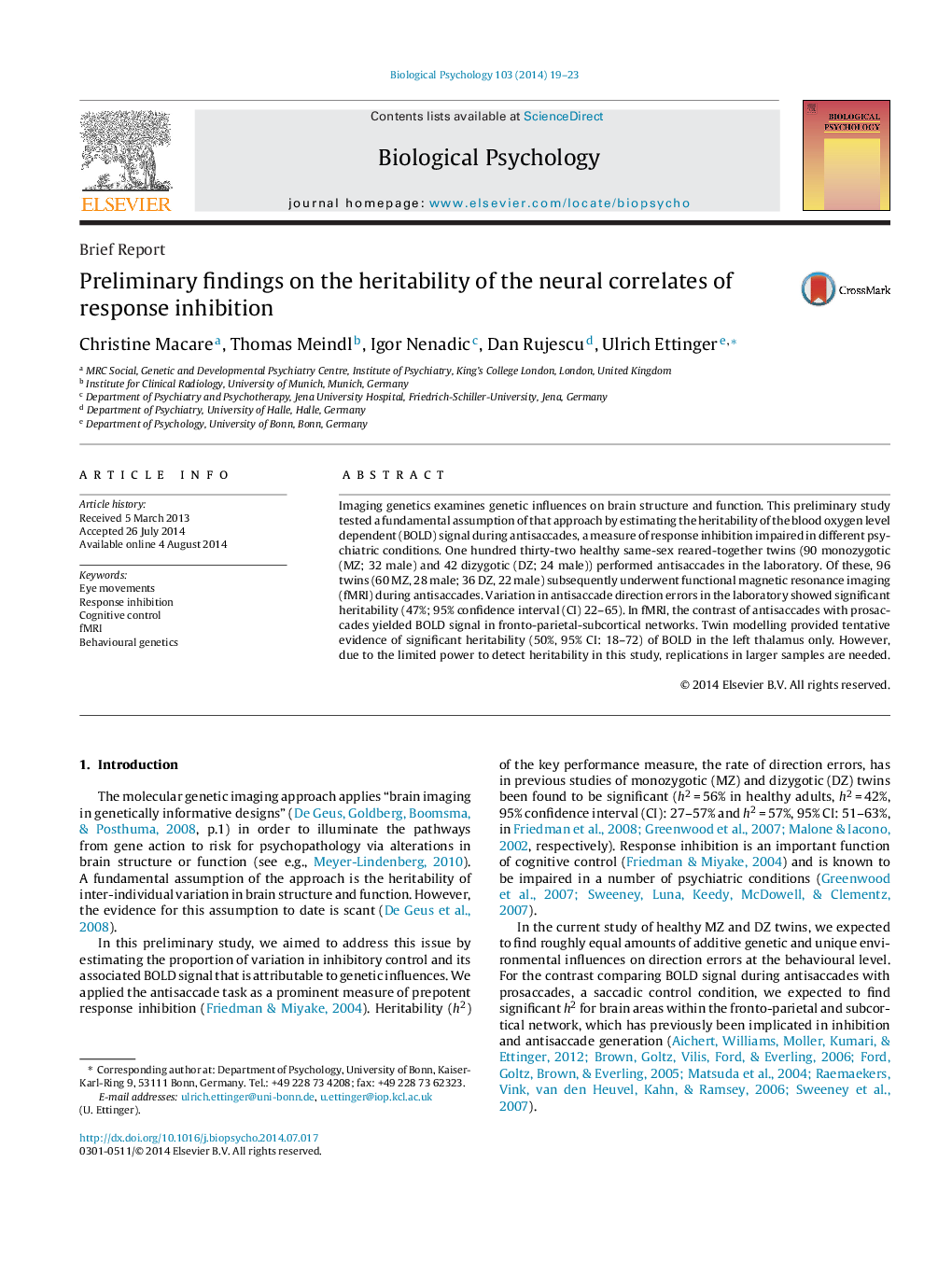| Article ID | Journal | Published Year | Pages | File Type |
|---|---|---|---|---|
| 7278682 | Biological Psychology | 2014 | 5 Pages |
Abstract
Imaging genetics examines genetic influences on brain structure and function. This preliminary study tested a fundamental assumption of that approach by estimating the heritability of the blood oxygen level dependent (BOLD) signal during antisaccades, a measure of response inhibition impaired in different psychiatric conditions. One hundred thirty-two healthy same-sex reared-together twins (90 monozygotic (MZ; 32 male) and 42 dizygotic (DZ; 24 male)) performed antisaccades in the laboratory. Of these, 96 twins (60 MZ, 28 male; 36 DZ, 22 male) subsequently underwent functional magnetic resonance imaging (fMRI) during antisaccades. Variation in antisaccade direction errors in the laboratory showed significant heritability (47%; 95% confidence interval (CI) 22-65). In fMRI, the contrast of antisaccades with prosaccades yielded BOLD signal in fronto-parietal-subcortical networks. Twin modelling provided tentative evidence of significant heritability (50%, 95% CI: 18-72) of BOLD in the left thalamus only. However, due to the limited power to detect heritability in this study, replications in larger samples are needed.
Related Topics
Life Sciences
Neuroscience
Behavioral Neuroscience
Authors
Christine Macare, Thomas Meindl, Igor Nenadic, Dan Rujescu, Ulrich Ettinger,
